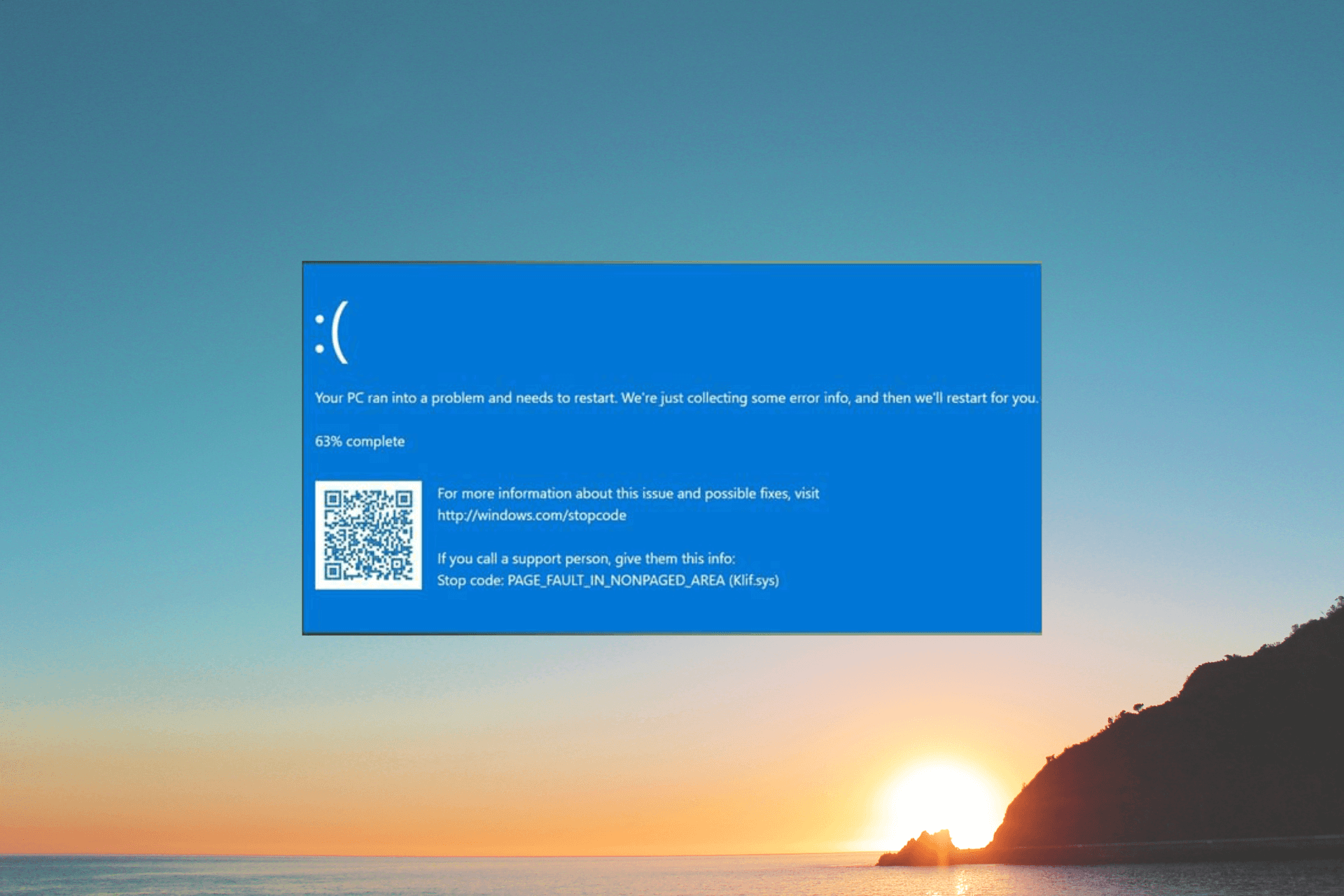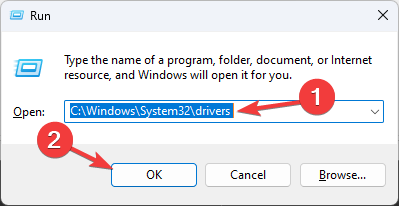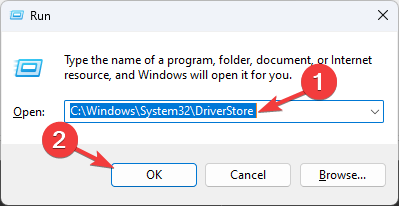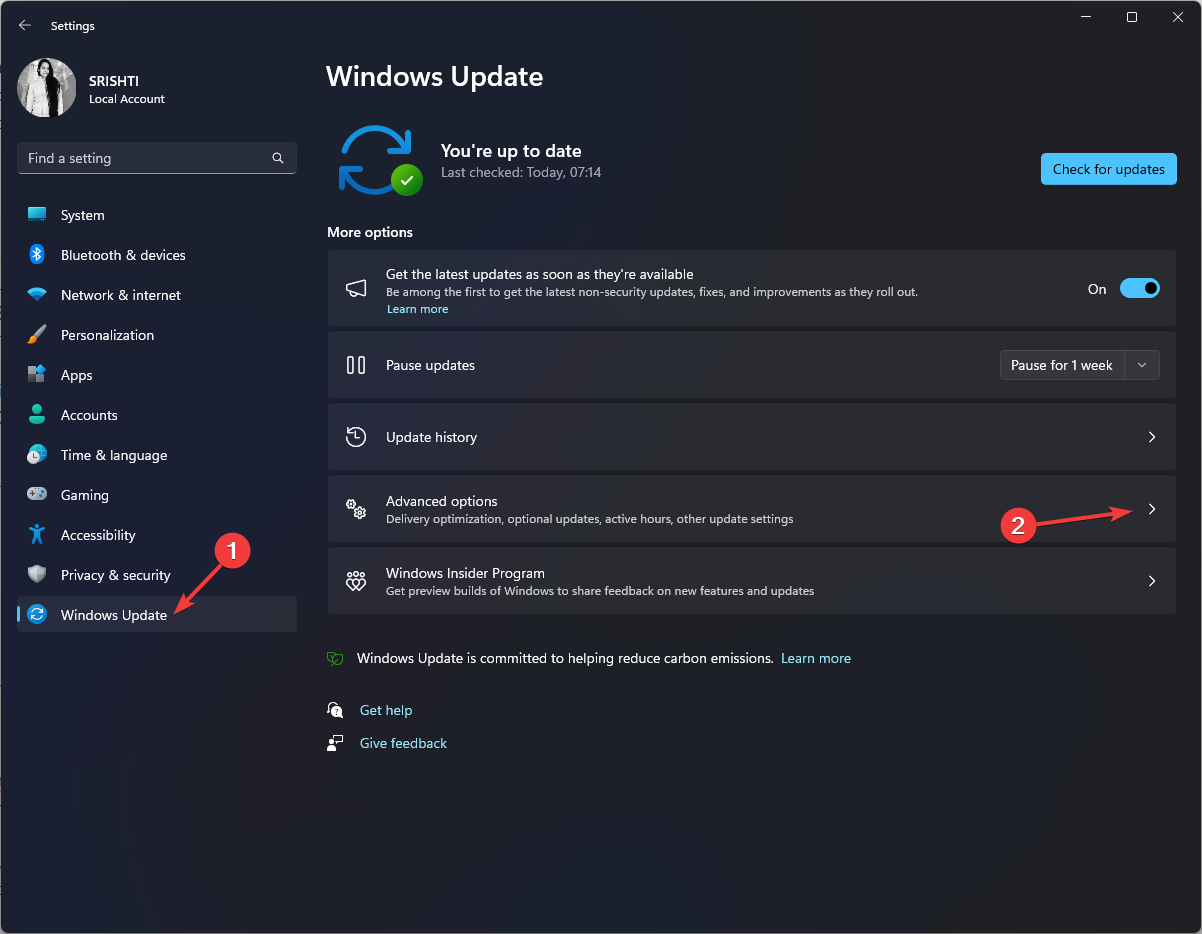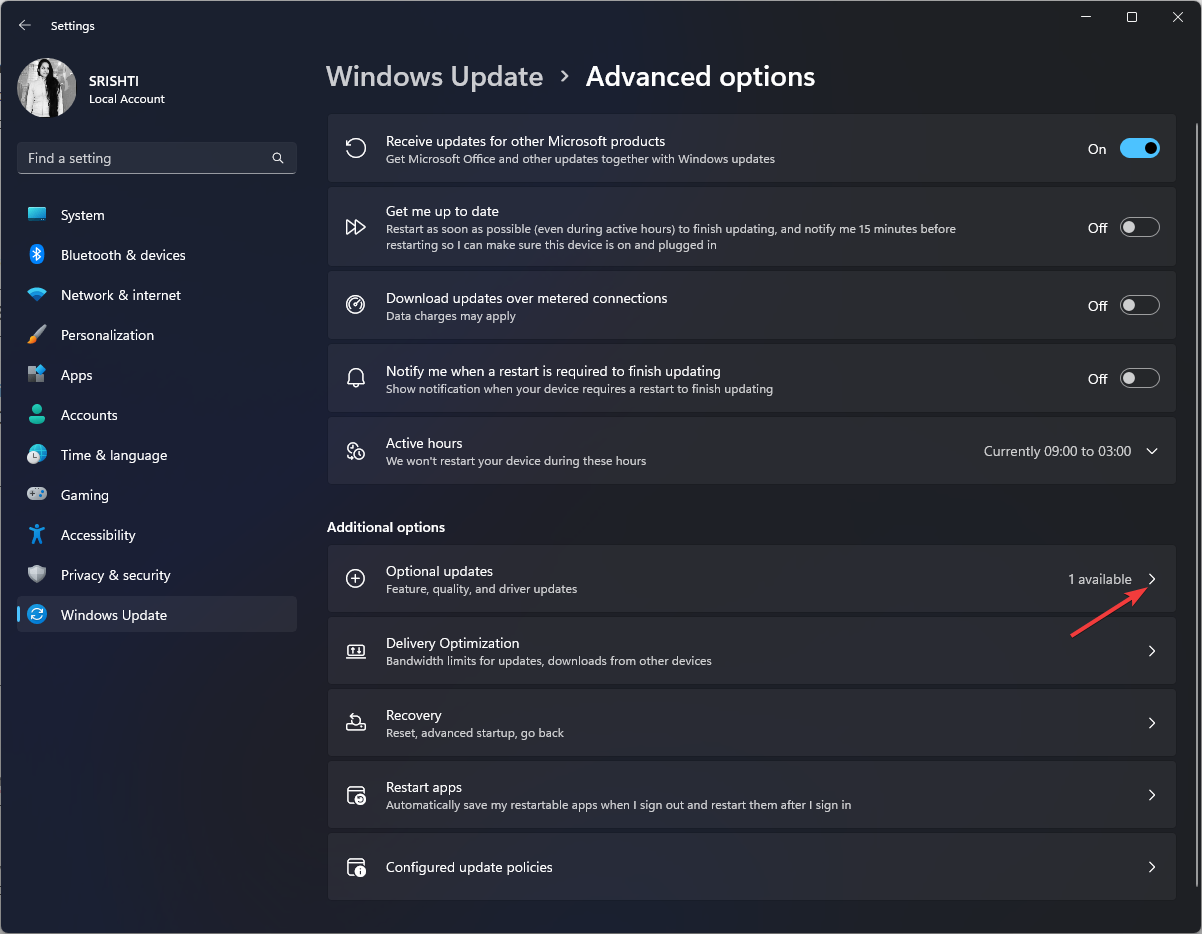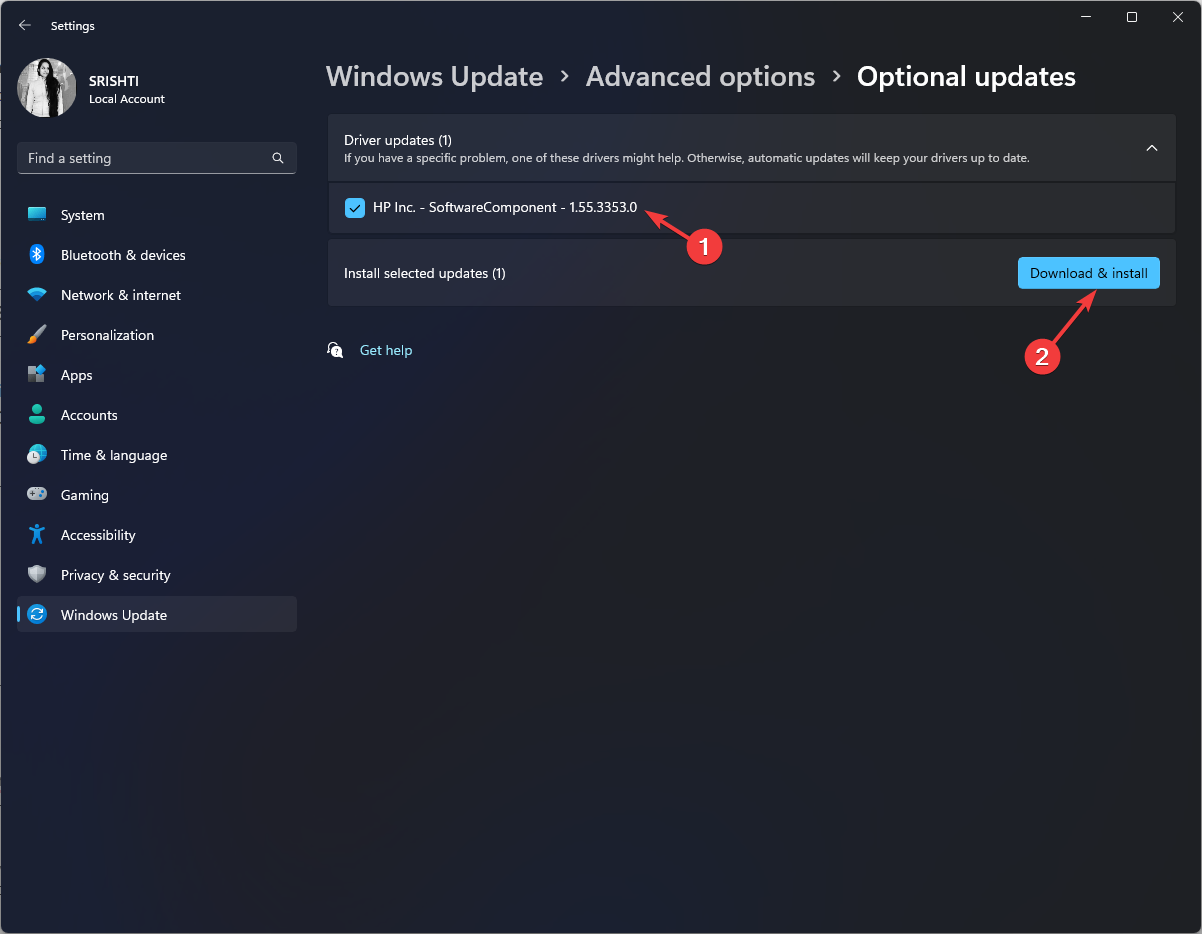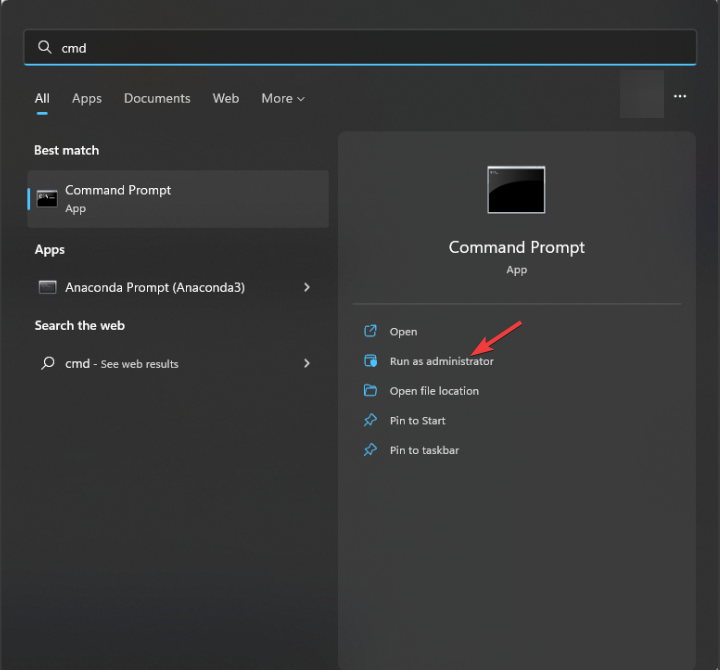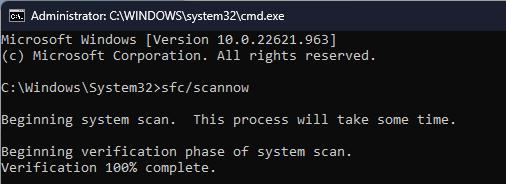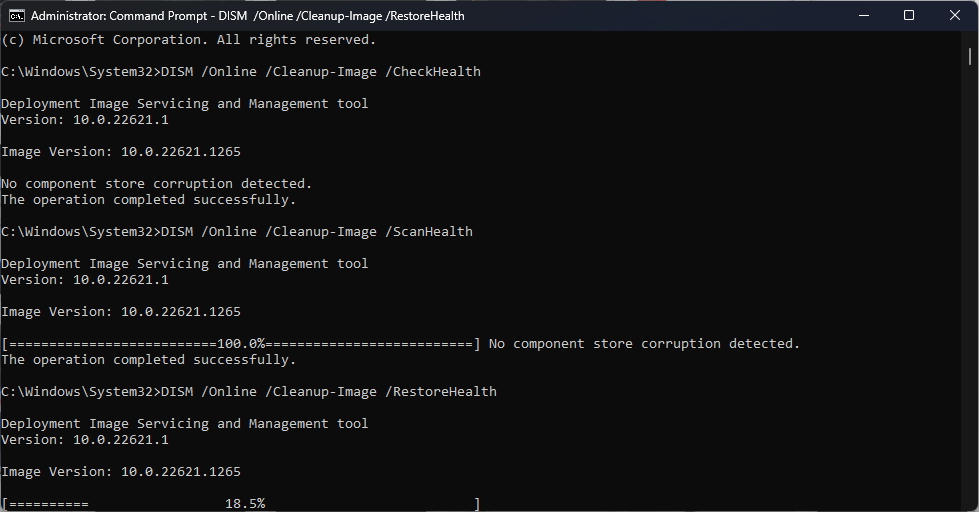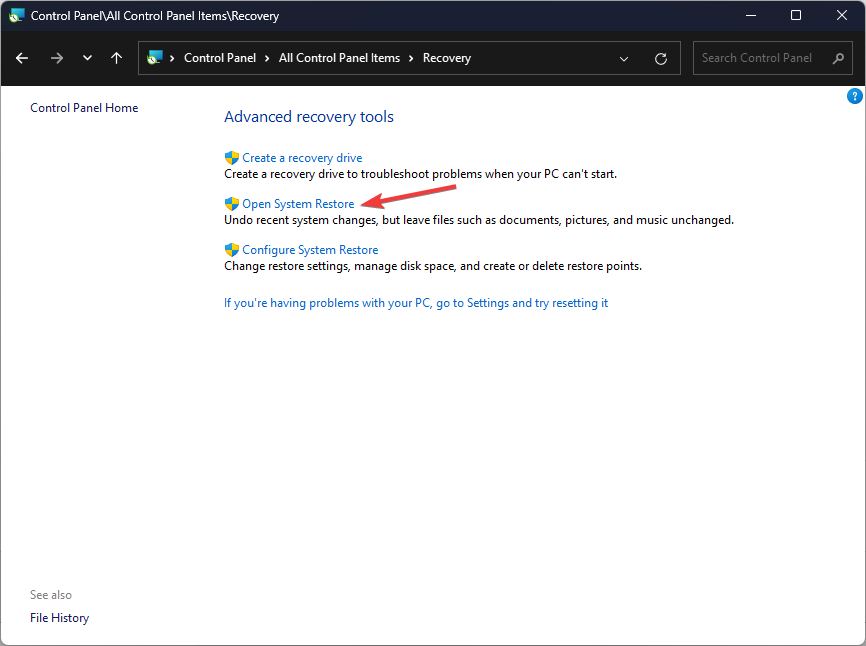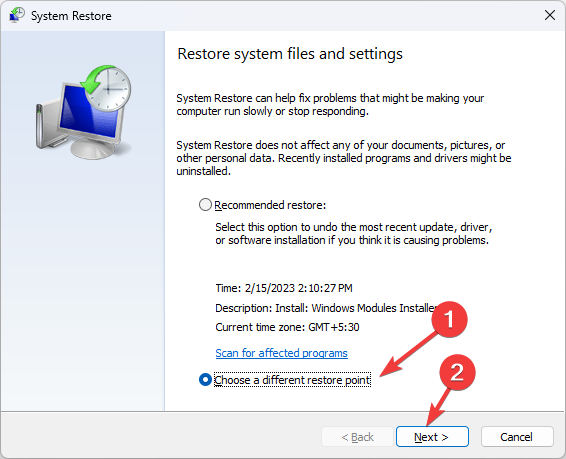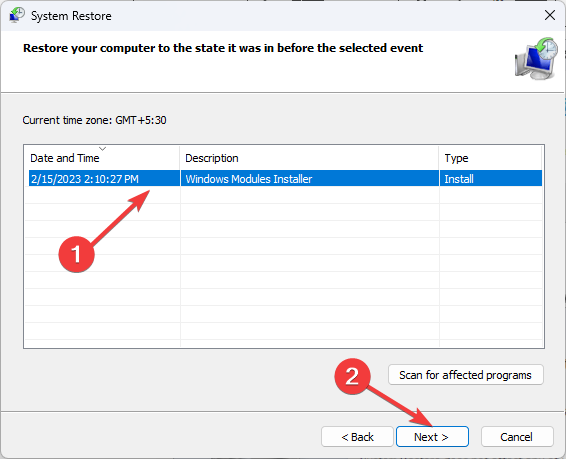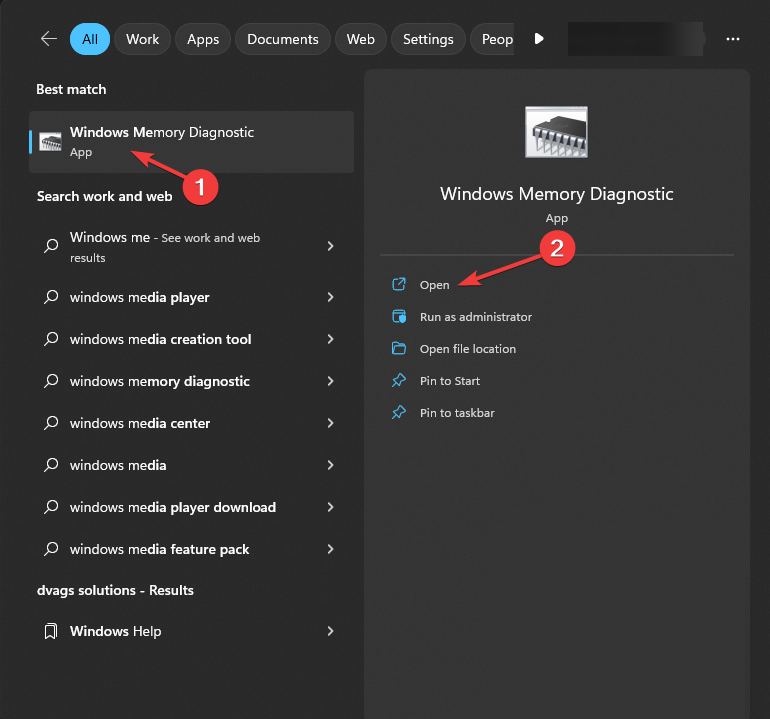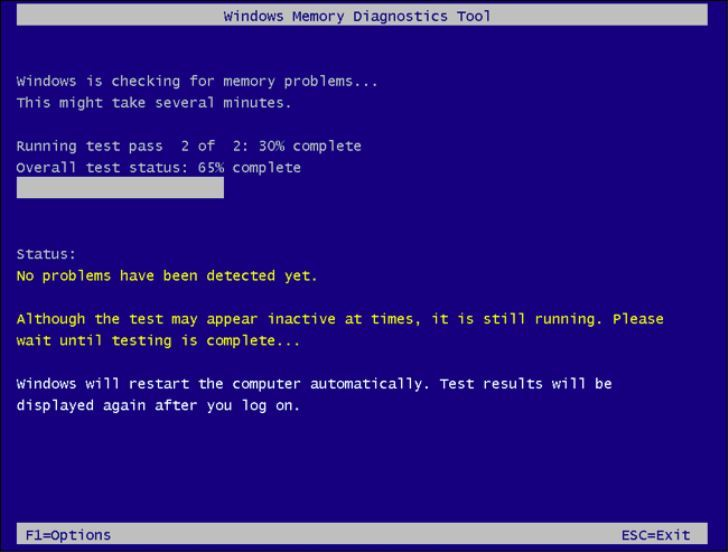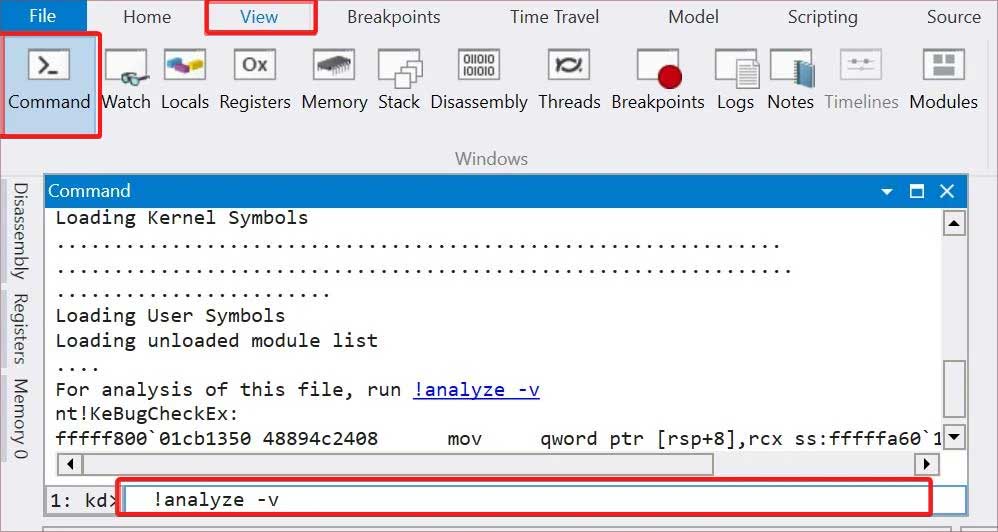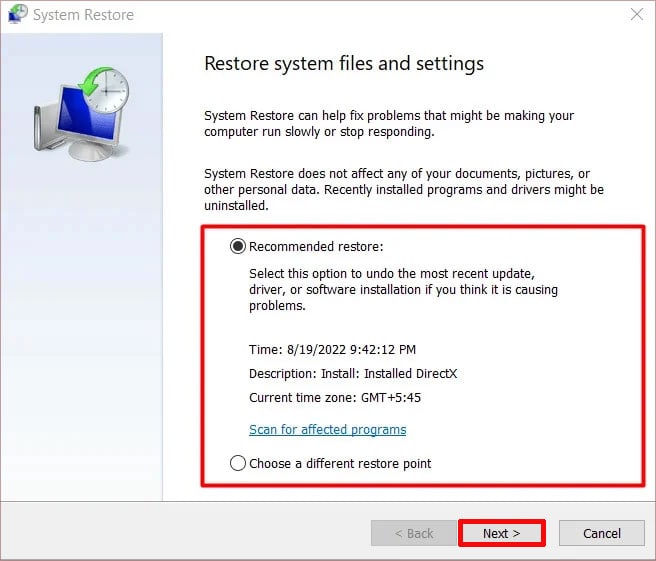Recommended Posts
-
- Share
Здравствуйте. Не удается установить KES, возникает ошибка установки (см. скриншот), подскажите, пожалуйста, как решить данную проблему?


Edited July 11, 2022 by ds.dll
Link to comment
Share on other sites
-
- Share
@ds.dllПохоже, что в вашей системе есть следы уже установленного ранее антивируса Kaspersky. Скачайте утилиту удаления тут. Лучше деинсталлировать в безопасном режиме.
Если не поможет, то просканируйте свою систему утилитой KVRT или dr.web’ом. Вполне возможно, что сидит ‘зверёк’ какой-то, который препятствует установке.
-
1
Link to comment
Share on other sites
- Author
-
- Share
18 часов назад, Kirilla сказал:
@ds.dllПохоже, что в вашей системе есть следы уже установленного ранее антивируса Kaspersky. Скачайте утилиту удаления тут. Лучше деинсталлировать в безопасном режиме.
Если не поможет, то просканируйте свою систему утилитой KVRT или dr.web’ом. Вполне возможно, что сидит ‘зверёк’ какой-то, который препятствует установке.
К сожалению утилита не помогает (да и никаких антивирусов в системе установлено не было), данная проблема повторяется на многих ПК (используются на пром. производстве).
Link to comment
Share on other sites
-
- Share
-
1
Link to comment
Share on other sites
-
- Share
7 минут назад, ds.dll сказал:
К сожалению утилита не помогает (да и никаких антивирусов в системе установлено не было), данная проблема повторяется на многих ПК (используются на пром. производстве).
Возможно вы используете какое-то ПО, которое конфликтует с KES. Посмотрите список несовместимого ПО.
Link to comment
Share on other sites
Please sign in to comment
You will be able to leave a comment after signing in
Sign In Now
Здравствуйте! Ситуация следующая:
Установлен был kav 6.0.3.837+Агент Администрирования
Проблема началась с появления ошибки в сбое некоторых служб Каспера (Файловый антивирус и ещё парочка не работали). Решил переустановить и в ходе установки при копировании новых файлов выдается «Ошибка 1326:C:Windowssystem32driversklif.sys. Возвращена функцией GetLastError : 1816» и происходил откат установки.
Была произведена проверка CureIT от Dr.Web — нашел какие-то 2 «возможно.MACRO.virus’а», которые удалил.
Прогнал Kaspersky Removing Tool (бесплатной утилиткой от Касперского,которая удаляется после проверки). Она нашла еще 1 какой-то вирус-удален
После этих процедур ничего не изменилось,установка так и не прошла должным образом
Файл klif.sys не удаляется,не переименовывается,не перемещается…Выдает ошибку «Недостаточно квот для обработки команды» — без понятия,что это значит.
Скачал утилиту AVZ архивом,который у меня не распаковывается должным образом, опять-таки «Недостаточно квот для обработки команды» и при распаковывании все файлы filename.AVZ не распаковываются.(З.Ы. на другом компе всё ок)
Поставил сканировать этот комп каспером с другого компьютера…было найдено 4 вируса
(3 Trojan-Dropper.Win32.Agent.ajjm и 1 Trojan-Spy.Win32.Goldun.bwt).
Троян-агентов он удалил (файлы …system32driversdwshd.sys , EIO.sys , REGSYS.SYS) , а Goldun ни в какую (файл C:/windows/system32/pptpr.dll )
Проверил на virustotal файл pptpr.dll -60%,что вирус.
После удаления Троян-агентов антивирус установился,но опять проблема со службами касперского.
Была скачана полиморфная версия AVZ (одним файлом).Поставил на сканирование и программа тоже определила в нем вирус.Вписал какой-то скрипт на удаление этого файла(восстановление системы было выключено).В итоге этот файл удалился!Решил переустановить каспер и Бац!)))Опять та же ошибка с klif.sys.
Требуется помощь: Как установить касперский,вернуть ему работоспособность и если есть вирусы,то по правильному их удалить 


Сейчас на компьютере не установлен антивирус
Была произведена проверка CureIT, AVZ, Kaspersky Removing Tool и с другого компьютера Kav 6
На время проверки AVZ восстановление системы было отключено.
ОС Window XP SP2.
virusinfo_syscheck.zip
virusinfo_syscure.zip
hijackthis.log
Изменено 17 марта, 2009 пользователем Kostya777
Run an SFC scan to fix the issue
by Srishti Sisodia
Srishti Sisodia is an electronics engineer and writer with a passion for technology. She has extensive experience exploring the latest technological advancements and sharing her insights through informative… read more
Updated on May 16, 2023
Reviewed by
Alex Serban
After moving away from the corporate work-style, Alex has found rewards in a lifestyle of constant analysis, team coordination and pestering his colleagues. Holding an MCSA Windows Server… read more
- The error might have occurred due to corrupted system files, interference with another app, or outdated software.
- To fix this, you can run an SFC scan, reinstall Kaspersky, or restore Windows to the previous version.
XINSTALL BY CLICKING THE DOWNLOAD FILE
This software will keep your drivers up and running, thus keeping you safe from common computer errors and hardware failure. Check all your drivers now in 3 easy steps:
- Download DriverFix (verified download file).
- Click Start Scan to find all problematic drivers.
- Click Update Drivers to get new versions and avoid system malfunctionings.
- DriverFix has been downloaded by 0 readers this month.
If you have encountered a Blue Screen of Death error displaying a stop code Klif.sys, this guide can help! We will cover all the available methods to fix the blue screen error right after discussing the causes.
What causes the Klif.sys Blue Screen of Death error?
The Klif.sys BSoD error is caused by an issue with the Kaspersky antivirus. The Klif.sys is a system driver that is installed with Kaspersky Lab products & it is responsible for intercepting and monitoring system events to protect your PC against malware and other threats.
There could be various reasons why this BSoD error occurred; some of the common ones are mentioned here:
- Corrupted driver file – If the Klif.sys driver file becomes corrupted or damaged, it may trigger a BSOD error. Try running SFC and DISM scans to fix the error.
- Incompatibility with Windows updates – Sometimes, a Windows update may conflict with the Klif.sys driver, leading to a BSoD error. Try uninstalling the latest update.
- Conflicts with other software – If other security software or system drivers conflict with Klif.sys driver, it may trigger this blue screen error. Uninstall or disable the security software to resolve the problem.
- Hardware issues – In rare cases, hardware issues such as a failing hard drive or memory may trigger a BSoD error related to Klif. sys. Try running a memory test.
Now that you know the causes, let us check out the solutions to fix it.
How can I fix the Klif.sys Blue Screen of Death error?
Before engaging in advanced troubleshooting steps, you should consider performing the following checks:
- Restart your computer.
- Try reinstalling the Kaspersky software.
- Uninstall other third-party security software.
- Make sure Windows is up to date.
If these minor tweaks didn’t work for you, move to the detailed solutions below.
1. Delete the Klif.sys file
- Press Windows + R to open the Run dialog box.
- Type the following path and click OK:
C:WindowsSystem32drivers - Locate and select Klif.sys and click the Delete button.
- Now in the Run window, copy & paste the following path and click OK:
C:WindowsSystem32DriverStore - Search and select Klif.sys and click the Delete button.
2. Update all device drivers
- Press Windows + I to open the Settings app.
- Go to Windows Update, and click Advanced options.
- Under Additional options, click Optional updates.
- Click to expand and if there is an update available, select it and click Download and Install.
- The driver updates available will be downloaded, and your computer will restart. So make sure you have saved all your work and closed all the apps running.
It’s equally possible to solve this issue or keep getting the same error if the updates are not available.
To raise the chances and certainly update outdated drivers, you can simply use an alternative tool developed to detect and fix old device drivers automatically.
⇒ Get DriverFix
3. Run SFC and DISM scans
- Press the Windows key, type cmd and click Run as administrator.
- Type the following command to repair system files and press Enter:
sfc/scannow - Wait for the scan to complete and if it comes up with an error, copy and paste the following commands one by one and hit Enter after every command:
DISM /Online /Cleanup-Image /CheckHealth
DISM /Online /Cleanup-Image /ScanHealth
DISM /Online /Cleanup-Image /RestoreHealth
- Once the scan is complete, restart your computer to confirm the changes.
4. Perform a System Restore
- Press the Windows key, type control panel, and click Open.
- Select View by as Large icons and click Recovery.
- Click Open System Restore.
- On the System Restore window, select Choose a different restore point and click Next.
- Select the desired point and click Next.
- Click Finish.
Windows will restart and restore it to the selected point. If the System Restore didn’t successfully complete, you can follow this informative guide to get fast solutions.
- A Service Installation Section in This INF Is Invalid [Error Fix]
- Bindflt.sys Blue Screen: How to Fix It in 5 Steps
- How to Enable Running Scripts on Windows 10
5. Run a memory test
- Press the Windows key, type windows memory diagnostic, and click Open.
- Before moving ahead, save your work and close all the running applications. Once done, click Restart now and check for problems.
- Windows will restart and automatically run the diagnostics checks. Please be patient, as this process may take some time.
Once it is done, your Windows will restart, and you can see the test results. If there are no errors, then you can move further.
However, if there are errors listed, then your RAM might be faulty. You might have to clean and reseat the memory modules. If the errors persist, then you might have to replace them.
If nothing has worked for you so far, you must perform a clean installation of Windows.
So, these are the methods to fix What causes the Klif.sys Blue Screen of Death error. If you have any questions or suggestions, feel free to mention them in the comments section below.
Still having issues? Fix them with this tool:
SPONSORED
Some driver-related issues can be solved faster by using a dedicated tool. If you’re still having problems with your drivers, just download DriverFix and get it up and running in a few clicks. After that, let it take over and fix all of your errors in no time!
Когда вы загружаете или перезагружаете устройство с Windows 10, вы можете столкнуться с Klif.sys ошибка синего экрана. Если да, то этот пост призван помочь вам. В этом посте предлагаются наиболее подходящие решения, которые вы можете попробовать решить эту проблему.
Подлинный cliff.sys file или Kaspersky Lab Intruder Filter — программный компонент Антивируса Касперского от «Лаборатории Касперского». Klif.sys обычно находится в C: Windows System32 драйверы. Это важный компонент-файл драйвера антивирусной программы от «Лаборатории Касперского». Он также используется в программном обеспечении Zone Alarm от CheckPoint Software Technologies.
Многие пользователи сообщают, что Windows 10 становится очень медленной до появления ошибки, и даже они не могут нормально изменить настройки Kaspersky.
Ошибка может отображаться как префикс:
Если вы столкнулись с этой проблемой, вы можете попробовать наши рекомендуемые решения ниже в произвольном порядке и посмотреть, поможет ли это решить проблему.
- Удалить Klif.sys
- Удалите программное обеспечение Касперского.
- Удалите любое другое стороннее программное обеспечение безопасности.
- Перейти с бета-версии на стабильную версию программы Kaspersky
- Выполните восстановление системы
Давайте посмотрим на описание процесса, связанного с каждым из перечисленных решений.
Если вы можете войти в систему как обычно, хорошо; в противном случае вам придется загрузиться в безопасном режиме, перейти на экран дополнительных параметров запуска или использовать установочный носитель для загрузки, чтобы выполнить эти инструкции.
1]Удалить Klif.sys
Сделайте следующее:
- Нажмите Клавиша Windows + R для вызова диалогового окна «Выполнить».
- В диалоговом окне «Выполнить» введите или скопируйте и вставьте путь, указанный ниже, и нажмите Enter.
C:WindowsSystem32drivers
- Прокрутите местоположение и найдите Cliff.sys и удалите его.
- Затем снова в диалоговом окне «Выполнить» введите или скопируйте и вставьте путь, указанный ниже, и нажмите Enter.
C:WindowsSystem32DriverStore
- Прокрутите местоположение и найдите Cliff.sys файл и удалите его.
- Перезагрузите вашу систему.
Если Klif.sys ошибка синего экрана появляется снова, попробуйте следующее решение.
2]Удалите программу Касперского.
Удаление антивируса Касперского — быстрый способ решить эту проблему. Компания предлагает инструмент для удаления, который поможет вам, когда возникает какая-либо проблема из-за этого программного обеспечения. Kavremover — это инструмент, позволяющий полностью удалить приложения «Лаборатории Касперского» с вашего устройства с Windows 10.
Сделайте следующее:
- Скачать инструмент Кавремовер.
- Дважды щелкните на kavremvr.exe для запуска приложения.
- Нажмите да в командной строке UAC.
- В окне инструментов щелкните на Удалять.
3]Удалите все сторонние программы безопасности.
Это решение требует, чтобы вы удалили со своего компьютера все сторонние антивирусные программы с помощью специального средства удаления антивируса, чтобы удалить все файлы, связанные с вашей антивирусной программой.
4]Переключитесь с бета-версии на стабильную версию Kaspersky.
Если вы используете бета-версию какого-либо программного обеспечения «Лаборатории Касперского», переключитесь на его стабильную версию. Если вы используете стабильную версию Kaspersky в сборках Windows Insider, то тоже может возникнуть эта ошибка.
5]Выполните восстановление системы
Если вы недавно установили программное обеспечение Kaspersky или не знаете, какие изменения могут вызывать ошибку, вы можете выполнить восстановление системы и выбрать точку восстановления перед установкой программного обеспечения.
Надеюсь это поможет!
The Klif.sys or the Kaspersky Lab Intruder Filter is the driver used by the Kaspersky Anti-virus software. This diver is designed to facilitate the antivirus software’s communication with the hardware or other connected devices. However, for some users, it is generating BSODs due to file corruption or some other underlying issue which we will discuss in detail today.
Contrary to what is believed, Klif.sys is not directly to blame for the BSOD. Rather, this driver malfunctioned for a number of different reasons. And we just need to identify these reasons to solve the Klif.sys BSOD.
Reasons for Klif.sys BSOD in Windows
Some of the potential causes for this BSOD:
- Corruption of system Files
- Another Antivirus conflicting with Kaspersky
- Incomplete installation of software applications
- Outdated Software
- Malware and Viruses
How to Fix Klif Blue Screen Error?
If you check the What caused section for the BSODs listed below, you’ll often find Klif.sys listed there.
STOP 0x00000050: PAGE FAULT IN A NONPAGED AREA
STOP 0×0000007A: KERNEL DATA INPAGE
STOP 0x0000000A: IRQL NOT LESS EQUAL
STOP 0x0000003B: SYSTEM SERVICE EXCEPTION
STOP 0x0000007E: SYSTEM THREAD EXCEPTION NOT HANDLED
STOP 0x0000001E: KMODE EXCEPTION NOT HANDLED
These above-mentioned BSODs can occur due to numerous reasons. If these are linked with the Klif.sys, applying the fixes specified for it can do wonders for you. So, we have listed the fixes associated with the Klif.sys first. If the initial fixes don’t help you resolve the issue, you can use the dump files to analyze the BSOD in detail and find the best solution.
Before starting with any fixes, restart your computer and see if you still get the BSOD. If you are not able to log in to your device, you must boot into safe mode. You can do it from the Recovery environment or even use the Bootable media to enter the RE and then log in from the safe mode.
It is also recommended that you keep the operating system and the Kaspersky Antivirus up to date. Temporary glitches in the system tend to cause such BSOD errors, which sometimes can be fixed with updates.
Remove Klif.sys
The Klif.sys file is located in the directory %windir%/System32/drivers. Deleting this file can get rid of the BSOD error for you. Here’s how you can remove the file.
- Press Windows Key + R.
- Type
%windir%/System32/driversand hit enter.
- Search for the
Klif.sysfile and delete it. - Again, go to Run, type this file path, and hit enter.
%windir%/System32/DriverStore - Once again, search for the Klif.sys file and delete it.
Note: Deleting Klif.sys driver can cause the Kaspersky Antivirus to malfunction. If you do not want this, ignore this and move on with the next fix.
Disable Kaspersky
Since the BSOD is associated with the Kaspersky antivirus, see if disabling the antivirus will fix the issue for you. Disabling it will also let you perform malware scans using the Windows Defender. Here’s how you can do it.
- Go to the system tray and right-click on the Kaspersky Antivirus icon.
- Select Pause protection.
- Choose Pause and Click on Pause Protection.
Perform Malware Scans
Malware are commonly known for mimicking the system files. There is a possibility that this is the case with the Klif.sys too. The way to overcome this is to perform malware scans and remove them from the system. You can use Windows Defender for this purpose. Follow these steps to perform malware scans.
- Press Windows Key + I, to open up settings.
- Go to Privacy and Security > Windows Security.
- Select Virus and Threats Protection.
- Under Current Threats, Click on Scan Options.
- Select the Full Scan option and click on Scan Now button.
Scan for Rootkit
Rootkits possess capabilities to affect the system files and configurations and can do enough damage to your system. The rootkits come with administrator privileges and open the window for other malware and viruses to infect your device. Again, you could use Windows Defender for this.
- Press Windows Key + X and go to Settings.
- Go to Privacy and Security > Virus and Threats Protection.
- Under Current Threats, Click on Scan Options.
- Now, choose Microsoft Defender Antivirus (offline scan) and click on Scan now button.
Uninstall the Conflicting Antivirus Software
You should always use one Antivirus on your device to avoid functionality conflicts. If you have installed any other antivirus along with Kaspersky, it is advised you uninstall it.
Here’s how to do it.
- Press Windows Key + I to open up settings.
- Go to Apps > Apps and Features.
- Search for the Antivirus program you want to uninstall and click on the three vertical dots on the side of it.
- Click on Uninstall and give confirmation for it.
Note: Since the Antivirus programs are active at the kernel level, uninstalling them with the conventional method won’t work. In such cases, you must use the uninstaller from the Antivirus manufacturer to remove it completely from the system. Download the uninstaller from the respective antivirus’s download center, run the application and remove the antivirus.
Uninstall Kaspersky
Uninstalling the Kaspersky Antivirus resolves the issue of this BSOD for most users. If you use the Windows uninstaller, it might not remove all the software’s files. Therefore, you must use the kavremover tool for this purpose.
- Download the kavremover tool form kaspersky’s webpage.
- Install the software from the executable files.
- Once it is installed, open the tool.
- Click on the Remove button to uninstall the Kaspersky Antivirus and remove all the files associated with it completely.
- Restart the computer and check if the BSOD issue still persists.
Analyze the Dump Files
If you are not able to resolve Klif.sys BSOD, you must try analyzing the dump files. Crash Dump files are generated when the such system crashes occurs. This will give you an insight into the issue and helps you to use the fixes accordingly.
To analyze the dump files, follow these steps.
- Go to the Microsoft store and install the WinDbg Preview app.
- Open the app and go to the File tab
- From Start Debugging options, click on Open dump file.
- Browse the dump file from
%windir%or%windir%/minidump/and open it. - Now, go to the View tab and click on Command.
- In the command window, enter
!analyze -v - The debugging tool performs the analysis and generates a report. Check the Probably caused by section for gathering details of likely causes of the crash.
- For further assessment of the BSOD, you can even use the tools like Event Viewer and Driver Verifier.
Perform System Scans
BSODs are very likely to appear if there are some issues with the system files. In such cases, you could use the SFC and DISM scans to fix the corrupted files and see if it resolves the issue.
- Press the Windows key + X key and select Windows Terminal (Admin).
- Now use this command to run the DISM scans.
dism /online /cleanup-image /restorehealth - After the DISM scan is finished, use the SFC scans.
SFC /Scannow
Perform Clean Boot
Even though this BSOD is common if another antivirus software interferes with the Klif.sys file, the likelihood of other kinds of software conflicting with the driver cannot be ignored. For such cases, performing a clean boot could be a lifesaver.
Here’s how you can do it.
- Press Windows Key + R to open up Run.
- Type
msconfigand hit enter. - Go to the Services tab and check on the Hide all Microsoft Services.
- Now, click on Disable all button and press OK.
- Go to the Startup tab and click on Open Task Manager.
- Disable the applications and restart the system.
- If you do not get
Klif.sysBSOD after it restarts, one of the applications you disabled earlier might be at fault. - Enable the applications one by one to determine the culprit for the BSOD.
- If the BSOD error persists, the issue is generated by something else. In this case, re-enable the applications you disabled earlier to revert the clean boot.
System Restore
If you have created a restore point before the BSOD started, you could try performing the system restore to eliminate the issue. Here’s how you can do it.
- Press Windows Key + R.
- Type
rstruiand hit enter. - Select the Recommended restore and Click on Next
- Finally, click on Finish to start the restoring process.
- The process’s completion time may vary according to the system. When it finishes, you get a completion prompt.



